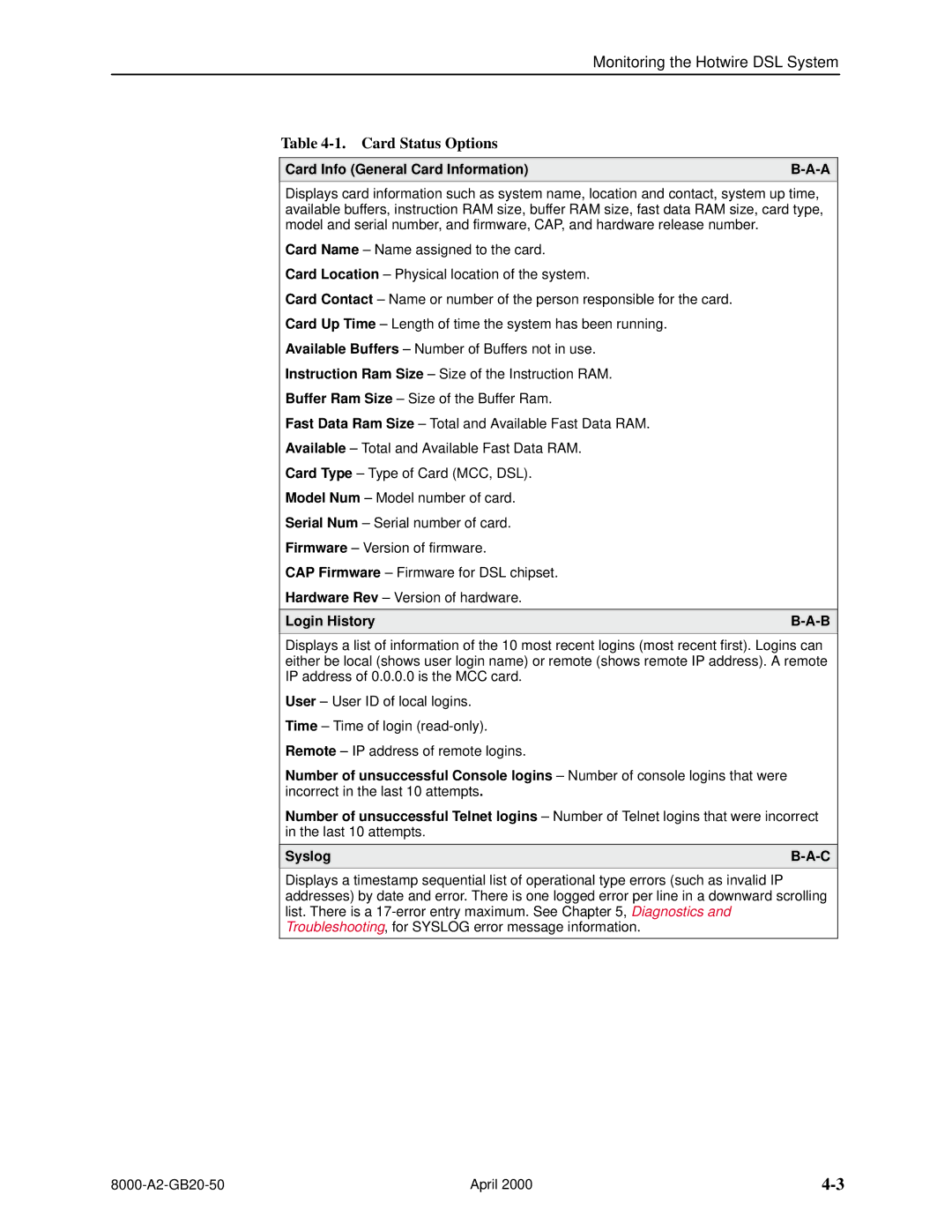
Monitoring the Hotwire DSL System
Table 4-1. Card Status Options
Card Info (General Card Information) | |
|
|
Displays card information such as system name, location and contact, system up time, available buffers, instruction RAM size, buffer RAM size, fast data RAM size, card type, model and serial number, and firmware, CAP, and hardware release number.
Card Name – Name assigned to the card.
Card Location – Physical location of the system.
Card Contact – Name or number of the person responsible for the card. Card Up Time – Length of time the system has been running. Available Buffers – Number of Buffers not in use.
Instruction Ram Size – Size of the Instruction RAM.
Buffer Ram Size – Size of the Buffer Ram.
Fast Data Ram Size – Total and Available Fast Data RAM.
Available – Total and Available Fast Data RAM.
Card Type – Type of Card (MCC, DSL).
Model Num – Model number of card.
Serial Num – Serial number of card.
Firmware – Version of firmware.
CAP Firmware – Firmware for DSL chipset.
Hardware Rev – Version of hardware.
Login History | |
|
|
Displays a list of information of the 10 most recent logins (most recent first). Logins can either be local (shows user login name) or remote (shows remote IP address). A remote IP address of 0.0.0.0 is the MCC card.
User – User ID of local logins.
Time – Time of login
Remote – IP address of remote logins.
Number of unsuccessful Console logins – Number of console logins that were incorrect in the last 10 attempts.
Number of unsuccessful Telnet logins – Number of Telnet logins that were incorrect in the last 10 attempts.
Syslog | |
|
|
Displays a timestamp sequential list of operational type errors (such as invalid IP addresses) by date and error. There is one logged error per line in a downward scrolling list. There is a
April 2000 |
